In the heart of Ostia Antica, the ancient seaport city of Rome, archaeologists have made a groundbreaking discovery: the oldest Jewish ritual bath, or mikvah, ever found in Europe. Dating back to the late 4th or early 5th century CE, this rare find sheds light on the presence of the Jewish community in ancient Rome, offering a glimpse into their religious practices and the rich cultural tapestry of the Mediterranean world. The discovery not only highlights the importance of Ostia as a cosmopolitan hub but also enriches our understanding of Jewish life in the Roman Empire.
Ostia Antica: A Crossroads of Cultures
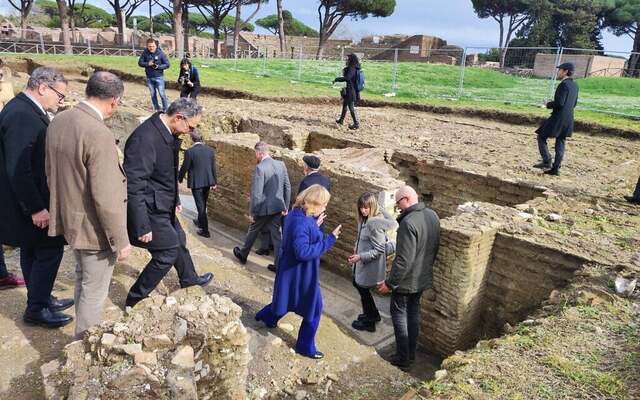
Located just 15 miles from Rome, Ostia Antica was once a bustling seaport at the mouth of the Tiber River. As the gateway to the Mediterranean, it was a thriving hub where different cultures mingled, including Greeks, Egyptians, Jews, and Romans. The city’s strategic position made it a center of commerce, trade, and cultural exchange. Ostia was also an essential military and administrative site, especially during the reign of Emperor Augustus, when it served as the port for the Roman Empire.
Despite its historical significance, much of Ostia Antica remained unexplored until recent archaeological efforts began to unearth its hidden treasures. The city’s ancient walls, public baths, temples, and residential areas tell the story of a diverse and interconnected society, where people of various backgrounds coexisted and contributed to the flourishing Roman Empire.
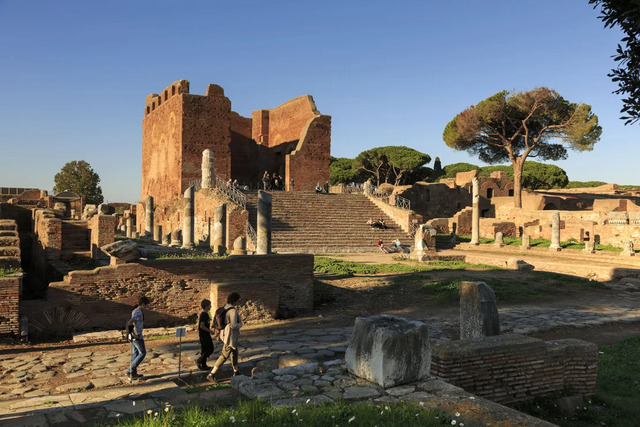
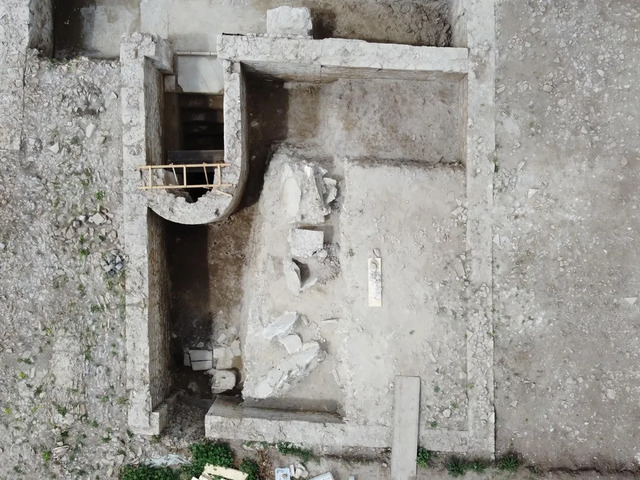
Video
Watch the video about the discovery of the Jewish ritual bath near Rome, believed to be the oldest of its kind in the world.
The Mikvah Discovery: An Unexpected Find
In the summer of 2024, an excavation led by archaeologist Luigi Maria Caliò at Ostia Antica took an unexpected turn. Caliò and his team had initially set out to uncover warehouses or a fluvial port, but instead, they unearthed a stunning surprise: a mikvah, a Jewish ritual bath. This bath, fed by groundwater and adorned with black and white tiles, was deep enough to allow full immersion, in keeping with Jewish purification laws.

The mikvah was found beneath a private family residence, known as a “domus,” in the central area of the ancient city. What makes this find extraordinary is its age—dating back to the 4th or 5th century CE—and its location, far from the traditional Jewish heartlands in the Middle East. This mikvah is the oldest of its kind found outside of Judea, making it a rare and invaluable discovery for historians and archaeologists alike.
The Mikvah’s Role in Jewish Rituals
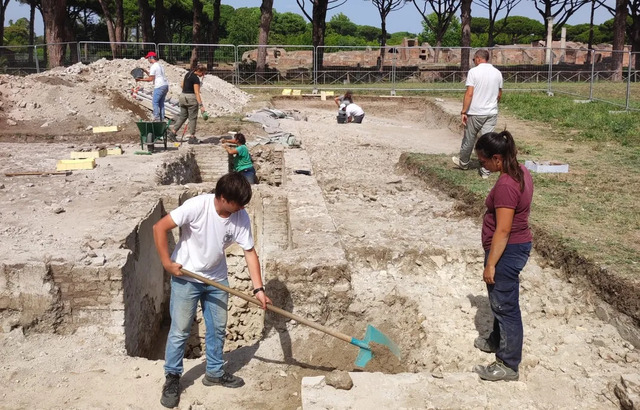
A mikvah plays a crucial role in Jewish religious life, serving as a ritual bath used for purification. According to Jewish law, a mikvah is required for various rites of passage, including marriage, conversion, and purification after menstruation or childbirth. It must be built with specific requirements, including being filled with natural, living water, such as rainwater or spring water.
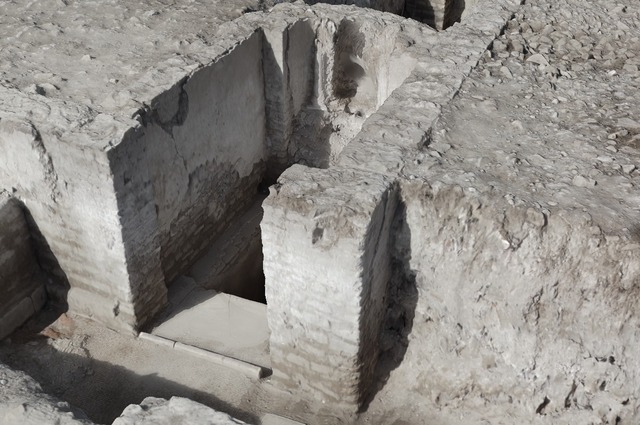
The mikvah at Ostia Antica is significant not only because of its religious importance but also because it demonstrates the integration of Jewish practices within a Roman city. The bath is constructed with meticulous attention to detail, with steps leading down to the water and a clear, organized layout that reflects the religious guidelines of the time. This discovery underscores the presence of a well-established Jewish community in Ostia, offering insight into how Jewish rituals were practiced within a diverse and multicultural Roman society.
The Jewish Presence in Ostia Antica
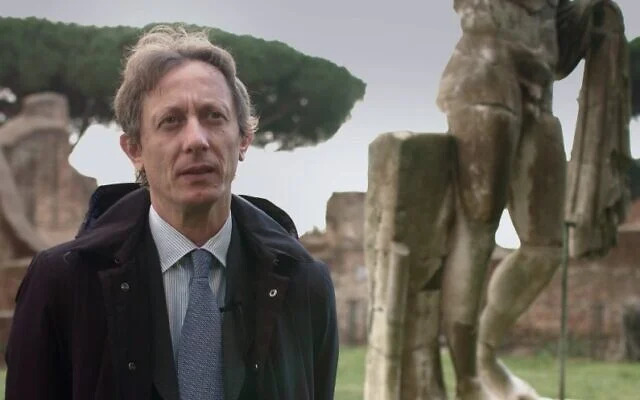
The Jewish community in Ostia Antica was not an isolated group but rather an integral part of the city’s vibrant social fabric. Archaeological evidence suggests that Jews have lived in Ostia since at least the 1st century CE, with inscriptions and tombstones bearing Jewish names found in the Pianabella Necropolis, the city’s cemetery. Historical sources also mention Jewish individuals in Ostia, such as Publio Lucilio Gamala, a public official whose surname is linked to the Jewish name “Gamla,” attested in burial inscriptions from Jerusalem.
Ostia’s Jewish population likely included both merchants and prominent individuals, some of whom may have held positions of influence in the local administration. The discovery of a mikvah in such a central location further suggests that the Jewish community played an active role in the city, maintaining their religious and cultural practices while coexisting with their Roman neighbors.
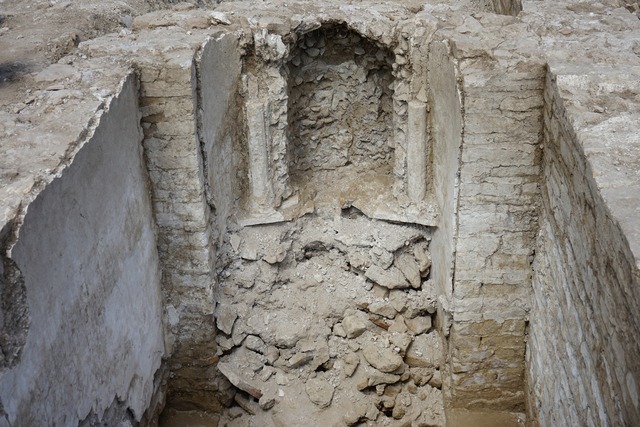
The Synagogue and Its Connection to the Mikvah
Ostia Antica is also home to one of the earliest known synagogues in Italy, built at the end of the 2nd century CE. The synagogue was dedicated to Jewish worship, and its architectural features include symbols such as the menorah, a palm tree, and other Jewish ritual objects. However, despite the synagogue’s prominence, no mikvah has been found in direct association with it, leading some archaeologists to speculate whether the community used the nearby sea for ritual purification, as Jewish law permits immersion in natural bodies of water.
The mikvah discovered in the domus could have been a private bath used by a Jewish family or a smaller, community-based ritual space, separate from the synagogue. Its location within a residential area indicates that Jewish rituals were practiced not only in public places but also within private homes, allowing for greater flexibility and accessibility for the Jewish community in Ostia.
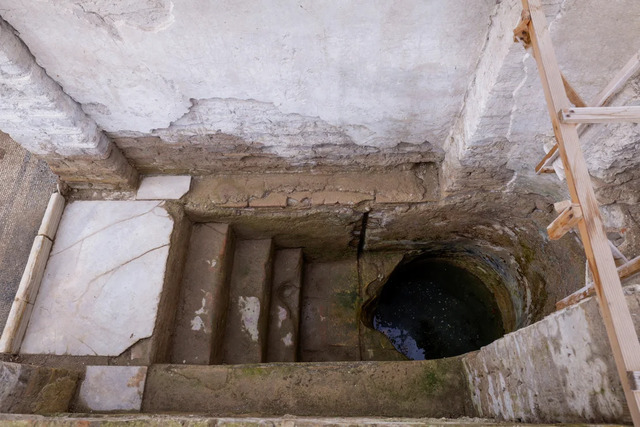
Archaeological Discoveries at Ostia Antica
The mikvah is not the only remarkable discovery made at Ostia Antica. Over the years, archaeologists have uncovered various artifacts that provide insight into the daily life of the city’s inhabitants. These include oil lamps, pottery, statues, and marble fragments, many of which depict Jewish symbols, such as the menorah and the lulav (a palm branch used during the Jewish holiday of Sukkot).
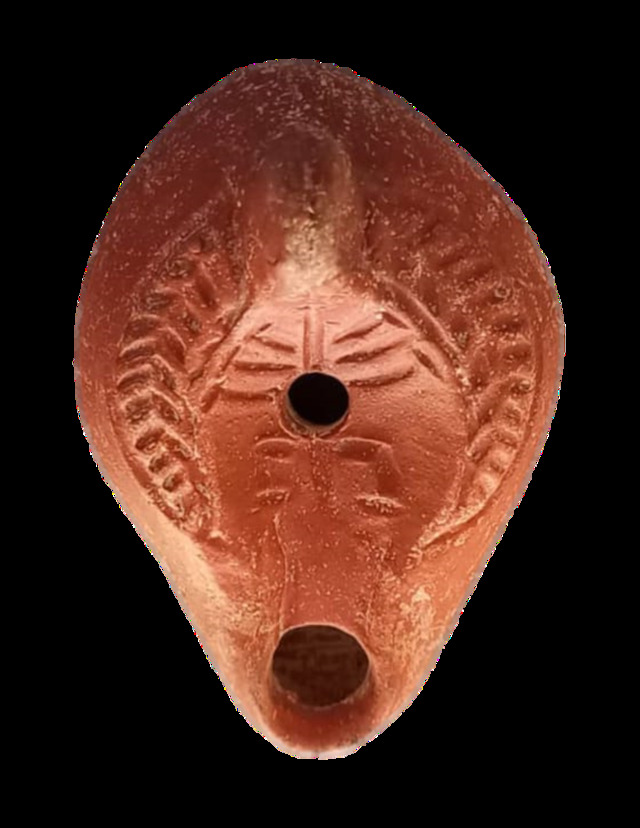
One particularly striking find is a glass goblet dating to the 5th or 6th century CE, which was discovered alongside the mikvah. This, along with other items found in the vicinity, helps to paint a picture of the Jewish community in Ostia Antica, highlighting their cultural and religious practices.
Preserving Ostia Antica’s Legacy
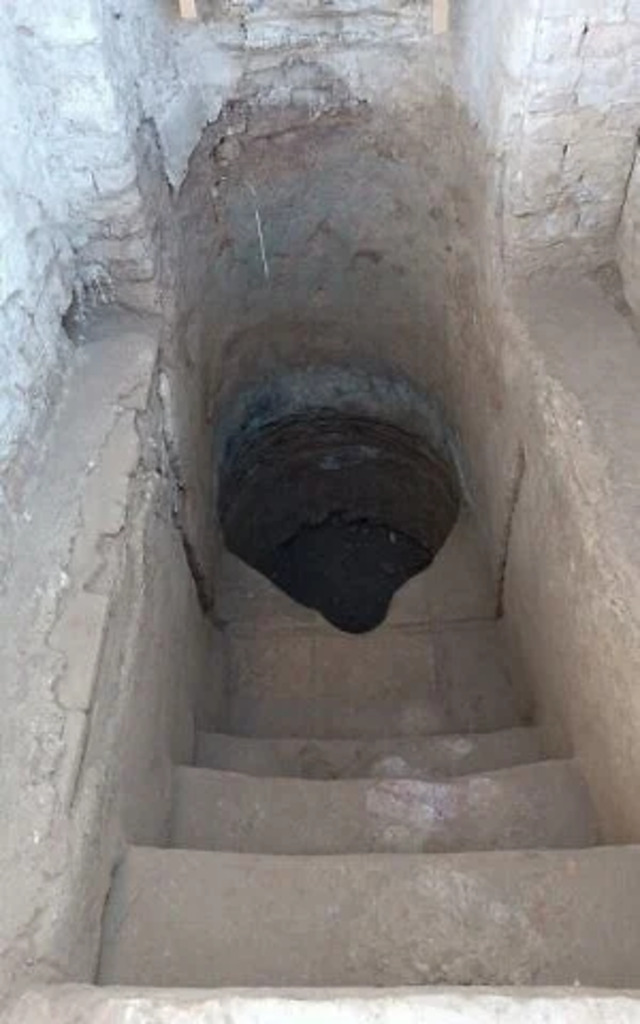
The discovery of the mikvah in Ostia Antica contributes to the broader understanding of the Jewish presence in ancient Rome and reinforces the idea that the city was a melting pot of different cultures and religions. Ostia’s archaeological site is a testament to the rich diversity of the Roman Empire, where people from various backgrounds, including Jews, Christians, and pagans, lived side by side, contributing to the empire’s cultural and economic success.
Efforts to preserve and study Ostia Antica continue, with ongoing excavations focusing on uncovering more details about the city’s Jewish community and their interactions with other groups. The discovery of the mikvah has sparked interest among Jewish visitors, many of whom are eager to explore this significant part of their heritage.
Video
Watch the video about the discovery of an ancient Jewish ritual bath in a family home in Jerusalem.
Conclusion
The discovery of the oldest Jewish mikvah in Europe at Ostia Antica is a remarkable find that sheds light on the life and rituals of the Jewish community in ancient Rome. This mikvah, along with other recent discoveries at the site, underscores the city’s importance as a crossroads of cultures and a hub for religious and cultural exchange. As excavation efforts continue, Ostia Antica promises to reveal even more about the Jewish community’s role in ancient Roman society, offering invaluable insights into the past and enriching our understanding of the ancient world.



